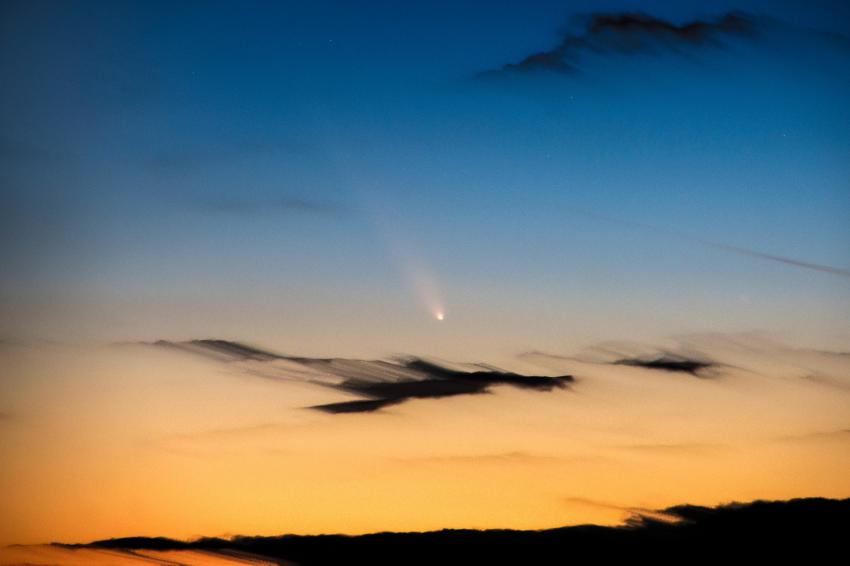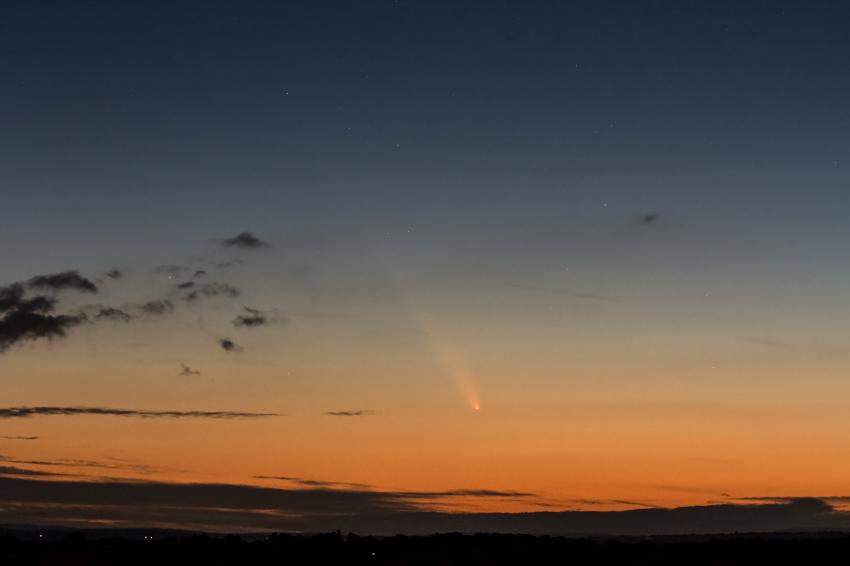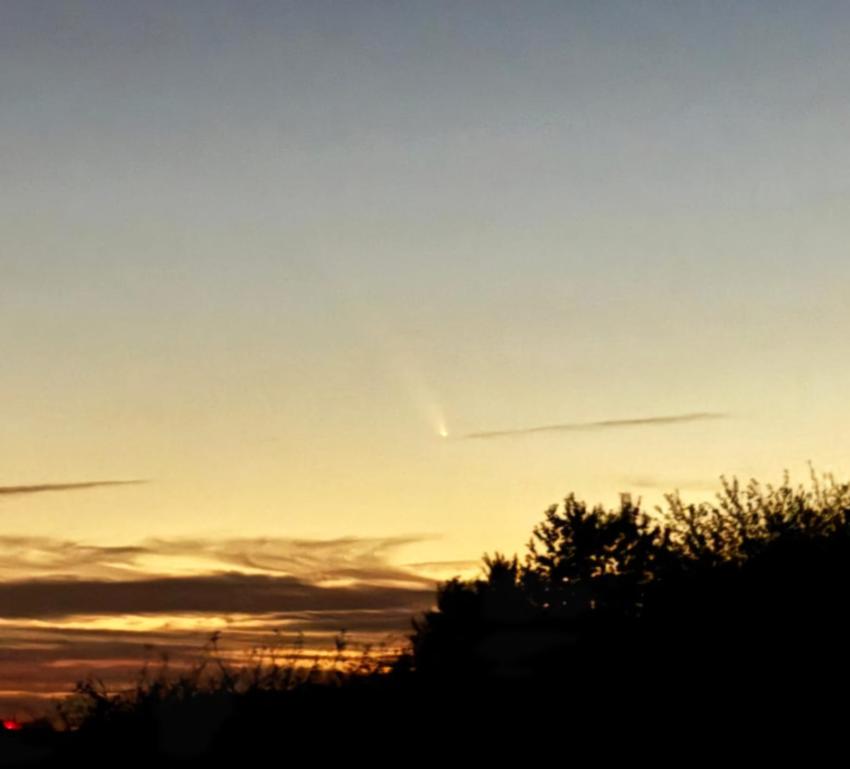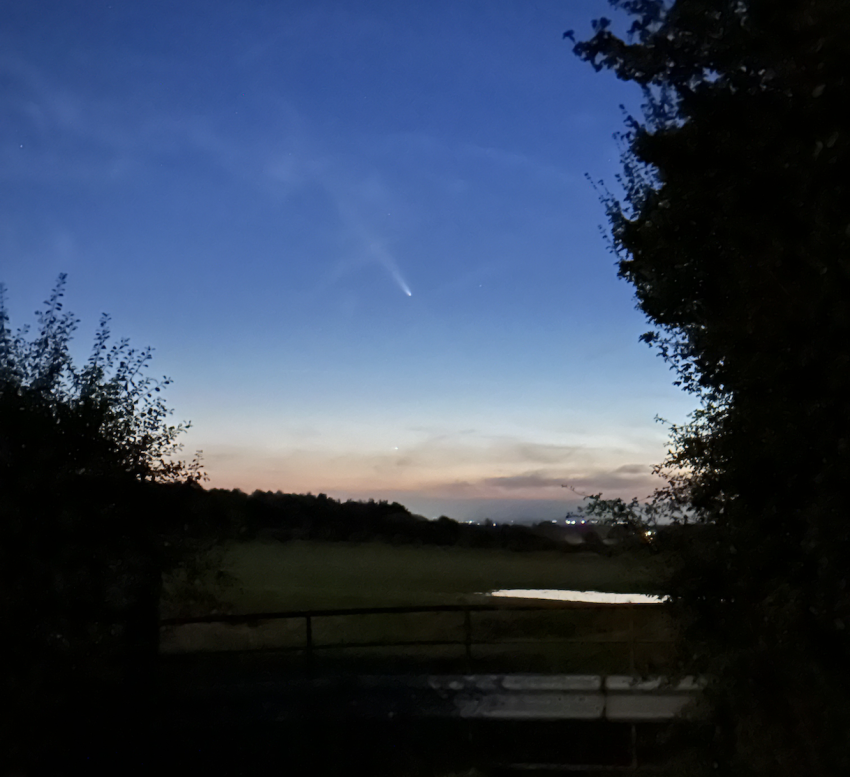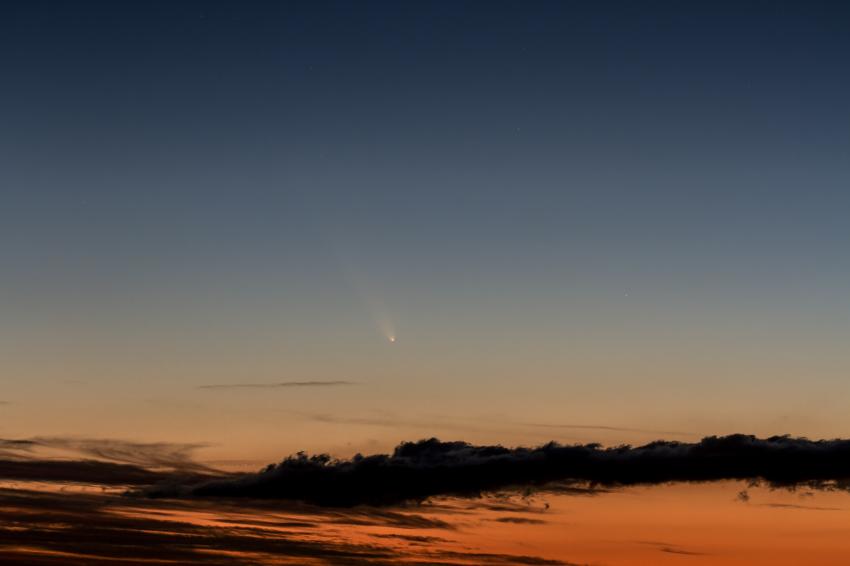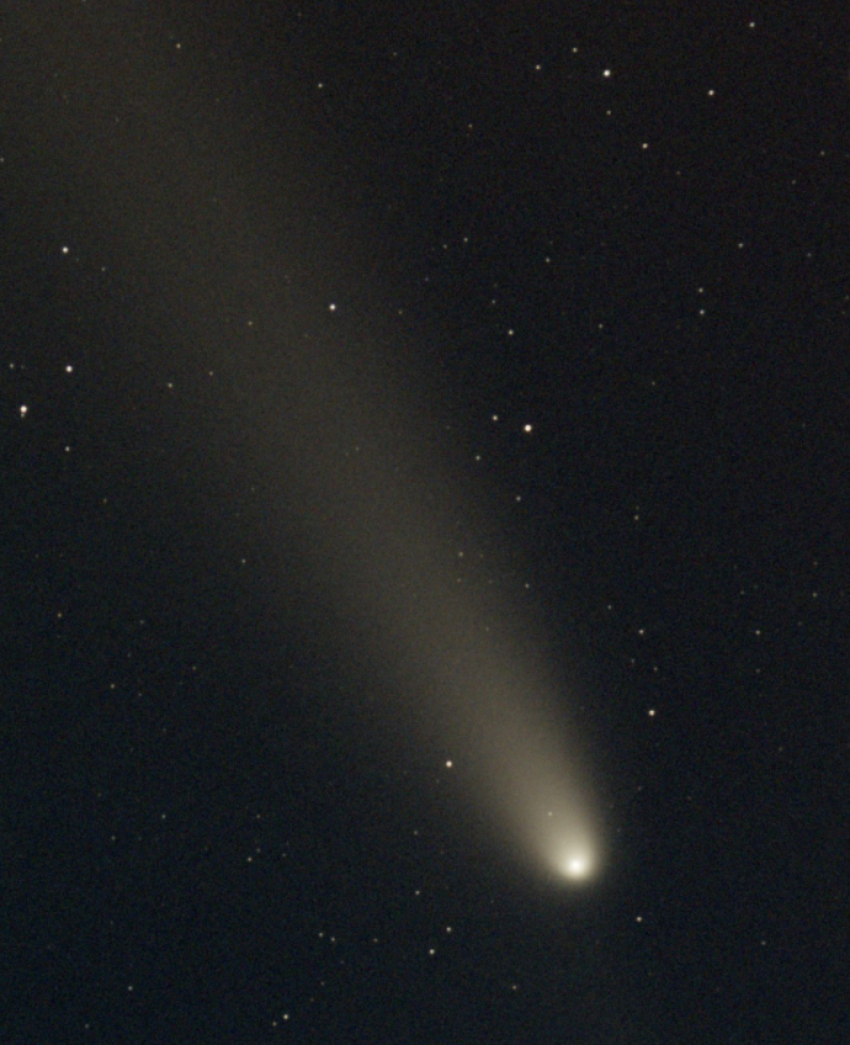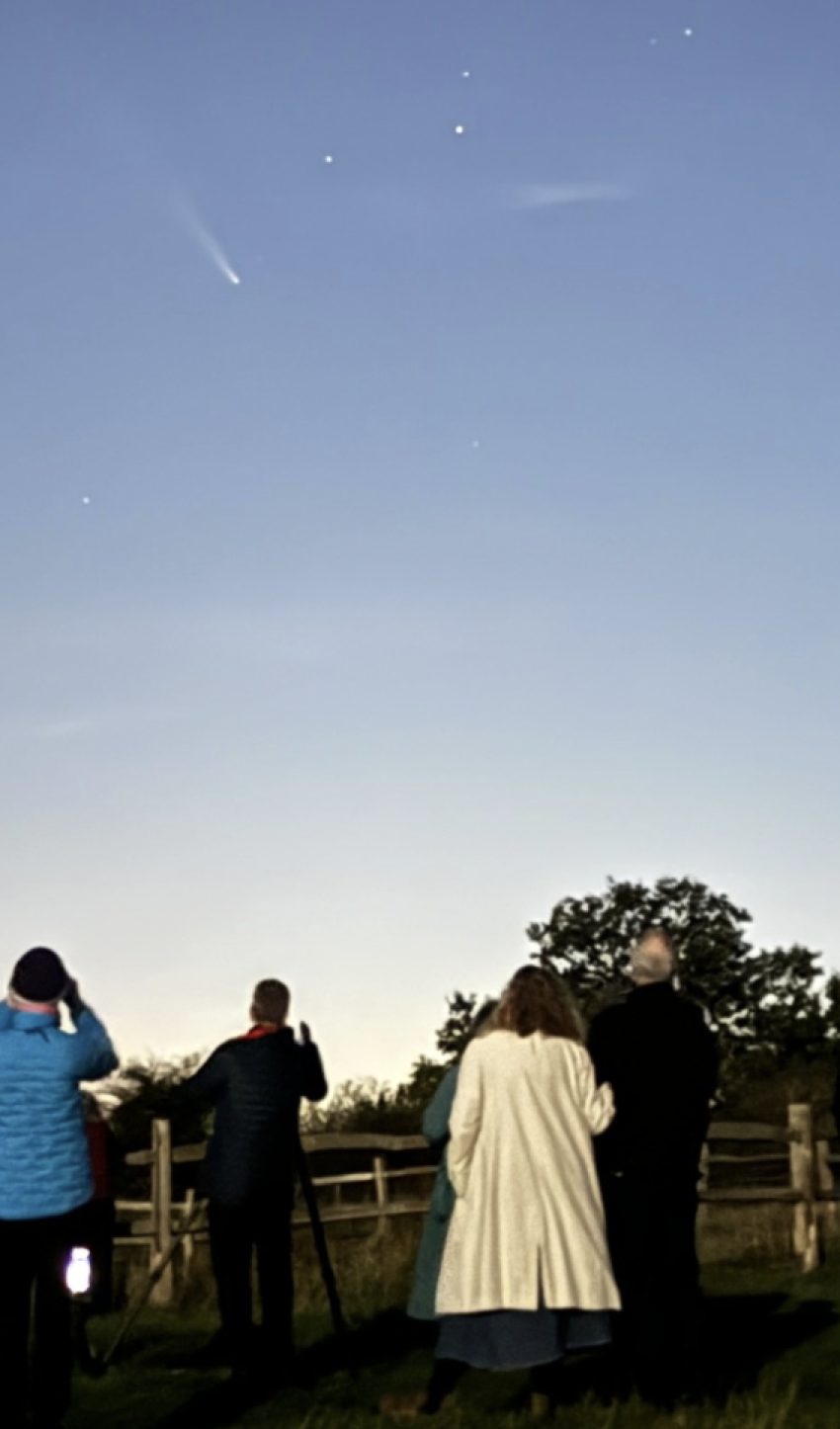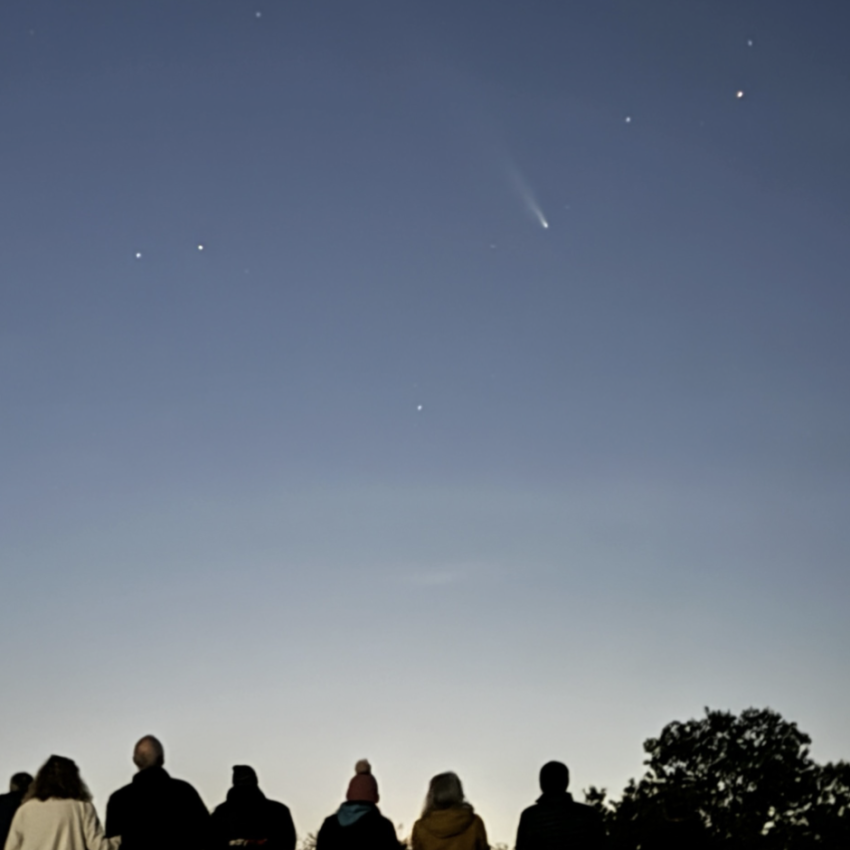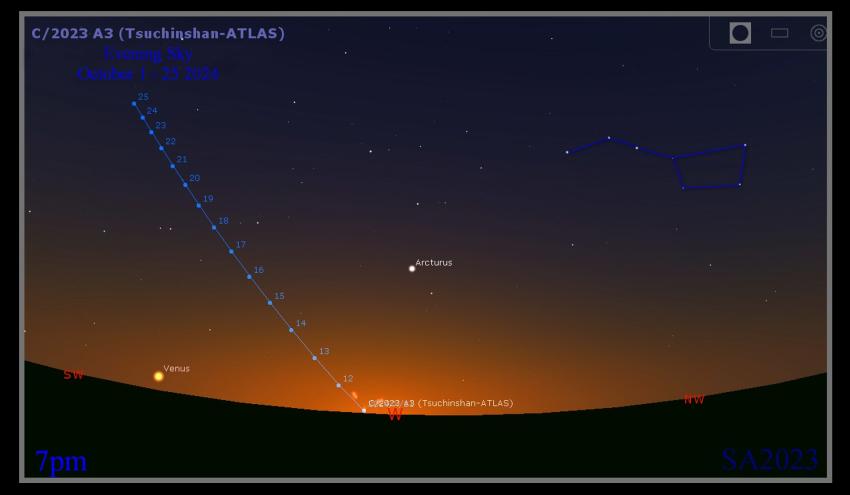Stargazers across the country have been snapping spectacular pictures of Comet A3 (Tsuchinshan-ATLAS), as they race to catch a glimpse of the once-in-a-lifetime object before it disappears for another 80,000 years.
The comet has been visible to the naked eye and with binoculars since the second window to catch a glimpse of it in the northern hemisphere opened on Saturday (12 October). However, the weather the last few days has made it harder to spot in some areas of the UK.
People in Norfolk, Sussex, London and County Durham are among those who have been able to get a picture of Comet A3, which appears as a bright streak of light on the horizon if you look to the west just after sunset and the view is not obstructed by light pollution or cloud.
It will be visible until the end of this month at least, but as it moves further and further from the Sun it will become harder to spot.
There are three reasons for this. Firstly, and most obviously, because it is travelling away from the Earth. Secondly, it won't be heated up as much by our star - meaning it will have less of a tail - and finally, it won't be as bright because there is not as much material in its tail to reflect the light from the Sun, while the intensity of the sunlight is also waning as the comet moves away.
Want to get your own picture of the comet? The Royal Astronomical Society's deputy executive director Dr Robert Massey has shared some tips in a video explainer below. There is also a Finder Chart below to help you.
“It helps if you’ve got a good DSLR camera and can take a series of exposures – a lot of astrophotographers do so successfully,” Dr Massey said.
“Also, if you have a good mobile phone camera and a small telescope, you can hold the mobile phone against the eyepiece of the telescope and try to take a picture that way.
“That worked well with comets like NEOWISE and it might work well with this one, depending on how bright it is.
“And if it’s genuinely easy to spot, you might, might be able to pick up your mobile phone, rest on something, and just point and shoot.”
The comet, which was discovered in January 2023 and named after the two observatories that independently spotted it, visits the inner solar system roughly every 80,000 years. This means it would last have been visible from Earth when the Neanderthals were walking the planet.
It comes from a place called the Oort Cloud – a giant spherical shell surrounding our solar system which is home to billions of objects, including comets.
If you’re lucky enough to get a picture of the comet, why not share it with us via our social media accounts. You can find us on X, Facebook, Instagram, LinkedIn and YouTube.
Media contacts
Sam Tonkin
Royal Astronomical Society
Mob: +44 (0)7802 877700
Robert Massey
Royal Astronomical Society
Mob: +44 (0)7802 877699
Notes for editors
About the Royal Astronomical Society
The Royal Astronomical Society (RAS), founded in 1820, encourages and promotes the study of astronomy, solar-system science, geophysics and closely related branches of science. The RAS organises scientific meetings, publishes international research and review journals, recognises outstanding achievements by the award of medals and prizes, maintains an extensive library, supports education through grants and outreach activities and represents UK astronomy nationally and internationally. Its more than 4,000 members (Fellows), a third based overseas, include scientific researchers in universities, observatories and laboratories as well as historians of astronomy and others.
The RAS accepts papers for its journals based on the principle of peer review, in which fellow experts on the editorial boards accept the paper as worth considering. The Society issues press releases based on a similar principle, but the organisations and scientists concerned have overall responsibility for their content.


